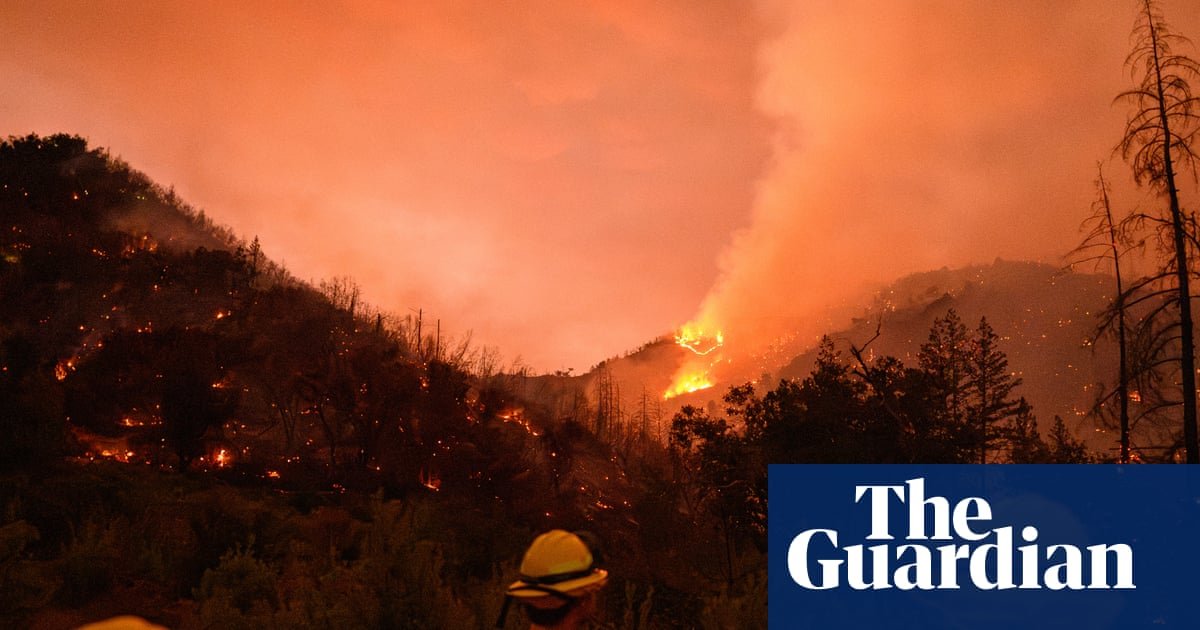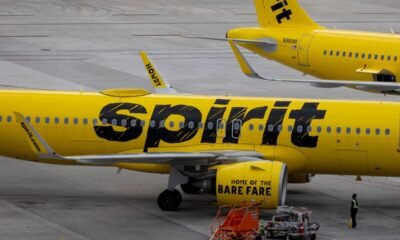Business
The Job You Studied for? AI May Soon Have It.

Good morning. The highest-stakes thing my sibling and I ever co-owned was a video game console. “We will share it,” we said. We did not. Within days, our parents had to mediate. The dispute was never truly settled — not that I’m bitter about it.
So, us running a business together? Unlikely. Meanwhile, Business Insider spoke with two brothers who’ve cracked the code. Here are the three rules they swear by to keep the peace while running multiple companies.
In today’s big story, a shift that could create a new wave of nimble, fast-moving companies — while leaving workers to face fewer jobs and limited career paths.
What’s on deck:
Markets: Dealmaking on Wall Street is so back — but hiring isn’t.
Tech: More young tech founders are staying sober to focus on the grind.
Business: The former Miss USA and Miss Teen USA give their first joint interview since resigning.
But first, big businesses need fewer people
If this was forwarded to you, sign up here.
The big story
The end of the mega-employer
Getty Images
How many people do you employ? Once, the bigger the number, the more impressive the answer. But perhaps not anymore.
With the rise of AI, pretty much every CEO overseeing a large white-collar workforce is hoping to achieve the same thing sooner or later, BI’s Aki Ito writes.
Andy Jassy said it in a blunt message to staff in June. JPMorgan, Klarna, and Ford all agreed: there are going to be fewer workers in the near future.
This shift has been happening for a while. Remember in 2022 when Meta announced it was cutting 11,000 workers in a single blow? Virtually every tech company then started trimming its ranks. Other industries were close behind.
At first, the narrative was simple. Pandemic overhiring. Market correction. Then back to normal. But the cuts kept coming. Months passed, then years. The hiring never quite came back. More and more, AI appears to be driving those austerity measures, Aki writes.
This is probably just the beginning.
That’s according to J. Scott Hamilton, CEO of workforce analytics provider Live Data. His team analyzed the share of tasks at Microsoft that could theoretically be handled by AI. The finding: Microsoft could eliminate up to 80,000 jobs, which is 36% of its workforce.
“The optimists are saying that the good companies will simply redeploy the assets elsewhere now that they can be more efficient,” Hamilton says. “But I think an equal argument can be made that they’ll just say, ‘We’re going to do the same amount with fewer people.'”
Meanwhile, America’s education system continues to churn out graduates trained for a world of white-collar stability that may be quietly vanishing. If the future of work is built around doing more with less, who will hire them?
There are reasons to be hopeful, however. If startups can launch with leaner teams, we may see more of them. New businesses tend to employ people with less experience and fewer credentials, Aki writes. They also create more competition for the established giants, which is good for consumers.
What comes next could be faster, leaner, and more efficient. For many people, this could also mean the jobs they were promised may disappear before they ever begin.
3 things in markets
Getty Images; Alyssa Powell/BI
1. The $1 billion cottage industry that’s cashing in on the retail trading craze. Businesses are offering courses, retreats, coaching, and other services that claim to improve traders’ performance, getting them in the right mindset to turn a profit. The demand is booming among retail traders looking to go full-time, improve, or who are simply bored, sources in the space told BI.
2. Dealmaking is back, but hiring isn’t following suit. Wall Street has been cautiously optimistic after big banks recently reported better-than-expected dealmaking returns. Emphasis on cautious, though: There’s still a wave of uncertainty that hasn’t retreated, and it’s slowing hiring. Plus, some banks are still cutting jobs behind the scenes, BI has learned.
3. How banks are staving off private equity poachers. Wall Street firms from Bank of America to JPMorgan have adopted different policies to keep junior bankers from taking future-dated buy-side jobs. Those policies range from reassigning juniors to firing them.
3 things in tech
Getty images; Tyler Le/BI
1. No, Instagram is not secretly sharing your location. After Instagram rolled out a new map and location-sharing feature this week, users fretted that the app was automatically showing everyone where they were posting from. That’s not true — but the panic shows just how much people distrust Meta, writes BI’s Peter Kafka.
2. In Silicon Valley, it’s cool to be sober. Young tech founders are ditching alcoholic drinks at parties and other social gatherings. The choice goes beyond personal preference: The appearance of staying sober is important in the industry’s health-focused grind culture.
3. Apple risks a “BlackBerry Moment.” A usually bullish analyst warned Apple is in danger of repeating its old rival’s mistakes. The iPhone replaced the BlackBerry as the hot cellphone of choice more than a decade ago, and Apple could risk its pole position in tech if it doesn’t pivot fast enough with AI.
3 things in business
Sage Media Group
1. Life after Miss USA. Noelia Voigt and UmaSofia Srivastava were the first Miss USA and Miss Teen USA to resign their titles. They told BI’s Anneta Konstantinides what they think about the future of the organization they left — as well as what’s in store for each of them — in their first joint interview since stepping down.
2. Gen Z is looking for love in the office. As workers have returned to office buildings, they’ve taken their quest for love with them. Although workplace romances have risks, younger generations are more likely to take them, thanks to dating app fatigue and a desire for a slow burn.
3. Can (A)I take your order? Elon Musk’s Tesla Diner might’ve been onto something. Expect many fast-food and fast-casual restaurants to go cashless and feature fewer human servers, industry insiders told BI. They shared how AI will reshape the restaurant experience.
In other news
Readers told us how they use AI in their job search — or why they avoid it.
What’s happening today
- Federal court bench trial on whether President Trump’s deployment of the National Guard and Marines to Los Angeles was legal.
-
Ford Motor event in Kentucky to share plans to design and build electric vehicles in the US.
Hallam Bullock, senior editor, in London. Grace Lett, editor, in New York. Akin Oyedele, deputy editor, in New York. Amanda Yen, associate editor, in New York. Lisa Ryan, executive editor, in New York. Dan DeFrancesco, deputy editor and anchor, in New York (on parental leave).
Business
Tories would maximise North Sea oil and gas extraction, Badenoch to say | Kemi Badenoch

The Conservative party will aim to “maximise extraction” of oil and gas in the North Sea if it wins power, Kemi Badenoch is expected to announce.
Badenoch will use a speech in Aberdeen in the coming days to set out her plans to extract as much oil and gas as possible instead of shifting away from fossil fuels, the Sunday Telegraph reported.
She will announce the Tories plan to overhaul the North Sea Transition Authority, which oversees the issuing of licences, dropping the word transition and replacing its 12-page mandate with a simple order to extract the maximum possible amount of fossil fuel.
Badenoch said Britain “cannot afford not to be doing everything to get hydrocarbons out the ground” to boost growth.
She said: “We are in the absurd situation where our country is leaving vital resources untapped while neighbours such as Norway extract them from the same seabed.
“Britain has already decarbonised more than every other major economy since 1990, yet we face some of the highest energy prices in the developed world.
“This is not sustainable and it cannot continue. That is why I am calling time on this unilateral act of economic disarmament and Labour’s impossible ideology of net zero by 2050.
“So, a future Conservative government will scrap all mandates for the North Sea beyond maximising extraction.
“It is time that common sense, economic growth and our national interest came first, and only the Conservatives will deliver that. We are going to get all our oil and gas out of the North Sea.”
Last month, the energy and net zero secretary, Ed Miliband, accused the Conservatives of being “anti-science” by abandoning a political consensus on net zero.
after newsletter promotion
In the first of what is promised to be an annual “state of the climate” report, the Labour MP set out the findings of a Met Office-led study that detailed how the UK was already hotter and wetter, and faced a greater number of extreme weather events.
Miliband quoted the former prime minister Theresa May, who put net zero targets into law in 2019 and had argued that the real climate zealots were “populists who offer only easy answers to complex questions”. He added: “I couldn’t put it better myself.”
Business
More than 500 workers at Voice of America and other broadcasters to be laid off | Trump administration

The agency that oversees Voice of America and other government-funded international broadcasters is eliminating jobs for more than 500 employees, a Trump administration official said. The move could ratchet up a months-long legal challenge over the news outlets’ fate.
Kari Lake, acting CEO of the US Agency for Global Media, announced the latest round of job cuts late Friday, one day after a federal judge blocked her from removing Michael Abramowitz as VOA director.
US district judge Royce Lamberth had ruled separately that the Republican administration had failed to show how it was complying with his orders to restore VOA’s operations. His order Monday gave the administration “one final opportunity, short of a contempt trial” to demonstrate its compliance. He ordered Lake to sit for a deposition by lawyers for agency employees by 15 September.
On Thursday, Lamberth said Abramowitz could not be removed without the approval of the majority of the International Broadcasting Advisory Board. Firing Abramowitz would be “plainly contrary to law”, according to Lamberth, who was nominated to the bench by Ronald Reagan.
Lake posted a statement on social media that said her agency had initiated a reduction in force, or RIF, eliminating 532 jobs for full-time government employees. She said the agency “will continue to fulfill its statutory mission after this RIF– and will likely improve its ability to function”.
“I look forward to taking additional steps in the coming months to improve the functioning of a very broken agency and make sure America’s voice is heard abroad where it matters most,” she wrote.
A group of agency employees who sued to block VOA’s elimination said Lake’s move would give their colleagues 30 days until their pay and benefits end.
“We find Lake’s continued attacks on our agency abhorrent,” they said in a statement. “We are looking forward to her deposition to hear whether her plan to dismantle VOA was done with the rigorous review process that Congress requires. So far we have not seen any evidence of that.”
They added: “We will continue to fight for what we believe to be our rights under the law.”
In June, layoff notices were sent to more than 600 agency employees. Abramowitz was placed on administrative leave along with almost the entire VOA staff. He was told he would be fired effective 31 August.
The administration said in a court filing Thursday that it planned to send RIF notices to 486 employees of VOA and 46 other agency employees but intended to retain 158 agency employees and 108 VOA employees. The filing said the global media agency had 137 “active employees” and 62 other employees on administrative leave while VOA had 86 active employees and 512 others on administrative leave.
The agency also houses Radio Free Europe/Radio Liberty, Radio Free Asia, Middle East Broadcasting Networks and Radio Martí, which beams Spanish-language news into Cuba. The networks, which together reach an estimated 427 million people, date to the cold war and are part of a network of government-funded organizations trying to extend US influence and combat authoritarianism.
In March, Abramowitz warned that Trump’s attempts to dismantle the VOA would be a “self-inflicted blow” to American national security, saying: “If America pulls off the playing field and cedes it to our adversaries, then they’re going to be telling the narratives that people around the world are going to be hearing, and that can’t be good for America … They’re going to be hearing an anti-America narrative. We need to fight that with truth.”
after newsletter promotion
He added: “The major challenge for the United States in general is this global information war in which countries like China and Russia are essentially really having our lunch. … So, I really feel that we need an organization that is accurate, unbiased, objective, and that tells the truth about America to the rest of the world in the languages that they understand.”
This week, Trump also moved to remove union protections from a handful of federal employees, including those from the VOA.
In response, the American Federation of State, County and Municipal Employees, the nation’s largest trade union of public employees, said: “AFSCME members who fulfill the Congressionally mandated mission to broadcast Voice of America around the globe shine the beacon of freedom on the most oppressive of regimes. Now, because they have been fighting to keep Voice of America’s mission alive, their own voice on the job has been stripped from them. AFSCME will fight this illegal action in court.”
Earlier this year, foreign staff at US-backed media outlets voiced concerns over their safety following Trump’s shuttering of the global media agencies.
Speaking to the Guardian in March, Jaewoo Park, a journalist for Radio Free Asia, said: “We have many co-workers in different services, several of whom came here and sought asylum visas. If their own government knew they worked for RFA [Radio Free Asia] and they went back to their own country, their lives would be at risk.”
“Authoritarian governments have praised what Trump is doing right now … In Burma, Vietnam, Laos, Cambodia, there were people who fought for freedom and democracy, and they came to work at RFA. It’s very risky for them. Their lives are in danger if Radio Free Asia doesn’t exist,” he added.
Business
Vineyards assess damage as wildfire rips through California wine country: ‘A devastating situation’ | California wildfires

Elton Slone and his colleagues at the Robert Craig Winery in Napa Valley had gathered for their annual pre-harvest company party last week – complete with copper pot carnitas and grape tacos – when one of his co-workers noticed an alert on her phone. The Pickett fire, a blaze that had started about 10 miles away near the town of Calistoga, was moving toward their vineyards on Howell Mountain.
Knowing that the Glass fire – a 2020 blaze that damaged numerous wineries and spoiled a year’s harvest – had burned along the same path, Slone hoped no fuel remained for this new fire. “But that was not the case,” he said. Within the week, the winery’s Candlestick Vineyard would become “a sacrificial lamb for the town of Angwin” when firefighters lit a controlled burn on their property to control the larger fire.
Vineyards can make excellent fire breaks because they are typically clear of burnable plant matter, and grape vines themselves are moist enough to be nonflammable. But heat damage and smoke can still destroy a crop.
The Robert Craig Winery lost the entire crop of their Candlestick Vineyard, which would have generated $4.5m in revenue. And Slone estimates about 10% of the vines will need to be replanted – a process that will cost hundreds of thousands of dollars and take a decade to see new bottles of wine ready for market. The team will test grapes on another one of their vineyards closer to harvest to see whether the smoke affected them.
The loss comes at the end of the growing season – after Slone’s vineyard had sunk nearly $1m into farming costs – and is made even more devastating because it’s happened before. The memories of the 2020 Glass fire and 2018 Camp fire, which burned farther east but still sent smoke to blanket Napa’s grapevines, are still fresh. “It’s financially a devastating situation,” said Slone.
The still-burning Pickett fire, which began on 21 August in northern Napa county, quickly burned through 6,800 acres (2,750 hectares), making it the San Francisco Bay Area’s largest wildfire this year. Preliminary estimates show that it caused $65m in agricultural losses, largely to wine grape growers, affecting about 1,500 acres (610 hectares) of agricultural land.
Although that damage is significantly less than that wrought by the Glass fire – which burned through 67,000 acres (27,000 hectares) and racked up $3.7bn in losses – the growing threat of wildfires in arid California has still shaken the wine industry.
“Northern California wine country is one of the treasures of the United States,” said Slone. “It’s something that I think all Americans should be concerned about because it’s a uniquely American thing.”
‘Tastes like a campfire’
Along the west coast, wine grape growers have implemented many strategies to prepare for wildfires – with the support of scientists at the US Department of Agriculture and local universities.
Ben Montpetit, chair of the University of California, Davis’s viticulture and enology department, said in an emailed statement that the industry has employed “barrier sprays to reduce smoke uptake, annual testing to establish baseline smoke marker levels in grapes, and small-lot fermentations after smoke events to assess potential wine impact”.
“Researchers are also investigating which grape cultivars are more sensitive or tolerant to smoke exposure,” he added.
“We’ve made a lot of progress in the preparedness realm,” said Natalie Collins, president of the California Association of Winegrape Growers, who noted the industry established a smoke exposure taskforce after the losses in 2018 to aid growers after wildfires.
The existence of that taskforce hints at a perennial problem for vineyards: though they can often keep wildfire off their acres, there’s little that can keep smoke at bay. And if smoke sits in an area for too long, it can leave grapes tasting ashy, like a campfire.
“Smoke taint issues are kind of fickle,” said Heather Griffin, a partner at Summit Lake Vineyards and Winery. “It depends on the varietal, depends on your ripeness level and depends on how long the exposure was.”
Griffin’s family’s vineyards were saved from the Pickett fire – “They stopped the fire at the end of our ridge up on Howell Mountain,” she said – but they’ll need to send grapes out for testing before harvest to be sure the smoke didn’t taint it.
Protecting the industry
For the first year ever, crop insurers are offering a new coverage option called the fire insurance protection smoke index endorsement, which would insure vineyards for losses due to smoke exposure.
But some growers say the cost of crop insurance has become unattainable after repeated wildfires.
“Our insurance went up so much after the fires of 2020. It literally went from $40,000 a year for really great coverage for all of our properties and inventory, and now it’s $300,000 a year and covers nothing,” said Slone.
For the 95% of Napa valley’s wineries that are family-owned, that cost can be “catastrophic”, he adds.
The wine industry has historically relied on federal funding to support USDA and university research into wildfire preparedness. Although those levels have remained steady despite widespread federal cuts, eight federal wine grape research scientists – including a smoke exposure specialist – were fired and then rehired early in the Trump administration’s Doge-era cuts.
“We want to make sure that an industry like ours continues to be protected,” said Collins, as “we continue to see the writing on the wall in California that wildfires likely will continue to be an issue here.”
It’s possible that some federal disaster relief funding may work its way to affected vineyards, but Griffin says buying wine from those wineries “helps everybody that’s up here”.
“Shoot them an email and buy some of their wine,” added Slone. “They will be the most appreciative people on the planet earth.”
-
Tools & Platforms3 weeks ago
Building Trust in Military AI Starts with Opening the Black Box – War on the Rocks
-

 Ethics & Policy1 month ago
Ethics & Policy1 month agoSDAIA Supports Saudi Arabia’s Leadership in Shaping Global AI Ethics, Policy, and Research – وكالة الأنباء السعودية
-

 Events & Conferences3 months ago
Events & Conferences3 months agoJourney to 1000 models: Scaling Instagram’s recommendation system
-

 Jobs & Careers2 months ago
Jobs & Careers2 months agoMumbai-based Perplexity Alternative Has 60k+ Users Without Funding
-

 Business1 day ago
Business1 day agoThe Guardian view on Trump and the Fed: independence is no substitute for accountability | Editorial
-

 Funding & Business2 months ago
Funding & Business2 months agoKayak and Expedia race to build AI travel agents that turn social posts into itineraries
-

 Education2 months ago
Education2 months agoVEX Robotics launches AI-powered classroom robotics system
-

 Podcasts & Talks2 months ago
Podcasts & Talks2 months agoHappy 4th of July! 🎆 Made with Veo 3 in Gemini
-

 Podcasts & Talks2 months ago
Podcasts & Talks2 months agoOpenAI 🤝 @teamganassi
-

 Jobs & Careers2 months ago
Jobs & Careers2 months agoAstrophel Aerospace Raises ₹6.84 Crore to Build Reusable Launch Vehicle



















